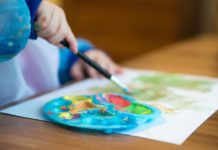From handwritten manuscripts, textbooks, to vintage audio and video recordings, the value of preserving old school materials can never be underestimated. Especially in the rapid advancement of technology, the significance of these artifacts should be passed and carried around for historical, cultural, and educational purposes. In this blog post, let’s delve into the value that old school materials hold and the challenges involved in their preservation. We’ll also discuss best practices, including proper handling, digitization techniques, and collaboration with schools and communities.
The Value of Old School Materials
Old school materials, such as textbooks, handwritten notes, and educational resources, offer unique insights into the past. They provide a tangible connection to previous generations and serve as valuable resources for historical research, cultural preservation, and educational development. By preserving these materials, we ensure that future generations can learn from and appreciate the knowledge and experiences of those who came before them.
Types of Old School Materials to Preserve:
- Textbooks and Educational Resources: Preserving textbooks, workbooks, and teaching materials not only captures the content but also offers a glimpse into the educational philosophies, pedagogical approaches, and social context of different time periods. These materials can serve as valuable resources for researchers, educators, and students, helping them understand the evolution of education over time.
- Handwritten Notes and Documents: Handwritten notes, journals, and documents hold personal perspectives, insights, and reflections. They provide a direct connection to individuals from the past, offering a glimpse into their thoughts, ideas, and experiences. Preserving these materials not only preserves personal narratives but also contributes to a broader understanding of historical events, social movements, and cultural shifts.
- Audio and Video Recordings: Audio and video recordings, such as lectures, speeches, performances, and interviews, are invaluable resources for capturing the oral history and cultural heritage of a bygone era. Formats like VHS-C tapes hold precious memories, documenting significant events, educational lectures, or artistic performances. Converting VHS-C tapes and other audio/video formats into digital files ensures their accessibility, mitigates further deterioration, and facilitates online archiving for wider public access.
Challenges of Preserving Old School Materials
Preserving old school materials comes with its own set of challenges. Factors like degradation, physical damage, and obsolescence of playback equipment pose obstacles to their long-term survival. Additionally, funding and resource limitations can impact preservation efforts, making it crucial to prioritize and strategize the preservation of these materials. Collaborative efforts between institutions, organizations, and individuals are essential to overcome these challenges and ensure the preservation of our educational heritage.
Best Practices for Preserving Old School Materials:
- Proper Handling and Storage Techniques: Implement archival storage practices, including acid-free enclosures, temperature and humidity control, and careful handling to prevent further deterioration.
- Conservation and Restoration Methods: Engage professional conservators to repair and restore fragile or damaged materials, ensuring their stability and longevity.
- Digitization and Online Archiving: Repurposing VHS tapes and other audio/video formats into digital files to ensure their accessibility, mitigate further deterioration, and facilitate online archiving for wider public access.
Collaborating with Schools and Communities
To maximize the preservation efforts for old school materials, collaboration with schools, libraries, museums, and local communities is essential. By sharing resources, knowledge, and expertise, these partnerships can enhance preservation initiatives, raise awareness, and engage a wider audience in the value of preserving our educational heritage.
Preserving old school materials is a crucial endeavor to ensure the legacy of education and cultural heritage for generations ahead. By recognizing the value of these artifacts, addressing preservation challenges, implementing best practices, and fostering collaboration, we can safeguard these educational materials for years to come. Let us embrace the task of converting them to digital formats and preserving other invaluable resources from the past, ensuring that the knowledge, experiences, and stories they hold continue to inspire the youths of today.








